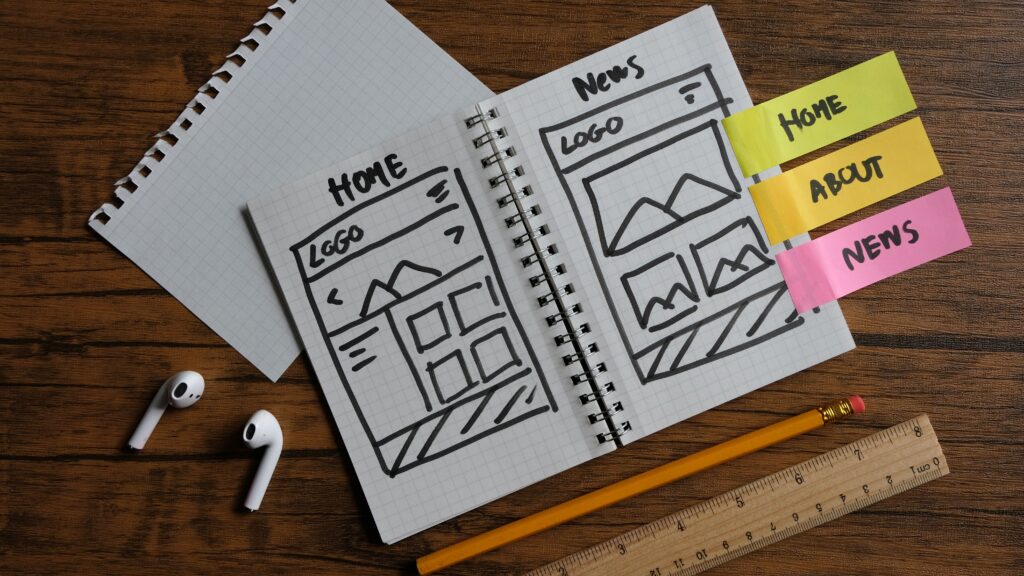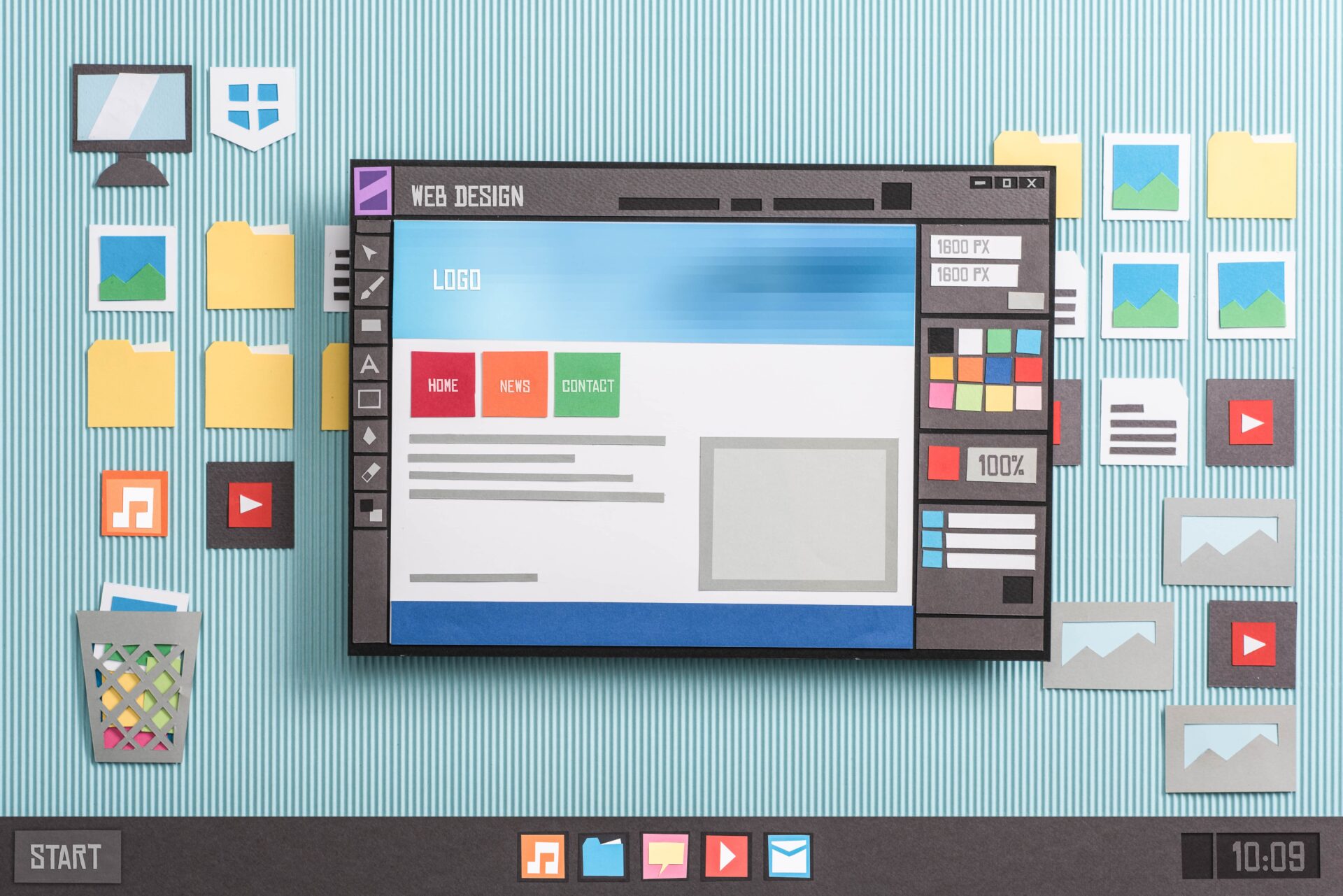Table of Contents
In the digital age, Effective Web Design is often the first interaction a user has with a brand. The significance of a well-designed website cannot be overstated—it’s a digital masterpiece that not only captures attention but also guides users seamlessly through their online journey. Successful web design involves a delicate balance between aesthetics and functionality, creating an experience that resonates with visitors and keeps them coming back for more.
Also Read: Our 5-Step Expert Process To Build The Brand of Your Website
Understanding User-Centered Design
At the heart of effective web design lies the principle of user-centred design. Placing users at the forefront ensures that every design element serves a purpose. To achieve this, understanding user personas is crucial. These personas embody the characteristics, preferences, and behaviours of your target audience, enabling you to tailor your design decisions to their needs.
Also Read: Embracing the Digital Age: 10 Smart Home Apps for Seamless Home Automation
Clarity and Simplicity in Design
A cluttered website can overwhelm users and drive them away. Embracing clarity and simplicity fosters a user-friendly environment. Streamlined layouts, clear navigation menus, and a minimalistic approach to design enhance the overall user experience. Consistency in branding elements reinforces brand identity and helps users build familiarity with your website.
Responsive and Mobile-Friendly Design
The ubiquity of mobile devices demands websites to be responsive and mobile-friendly. With more users accessing the internet on smartphones and tablets, responsive design adapts your website’s layout to different screen sizes, ensuring a seamless experience across devices. Adopting a mobile-first approach guarantees that your website looks and functions flawlessly on smaller screens.
Also Read: Web Design 3.0 Is Here: Are You Ready For The Transformation
Visual Hierarchy and Readability
Organizing content with a clear visual hierarchy guides users’ attention and aids comprehension. Typography plays a pivotal role in readability—choosing appropriate fonts and sizes enhances content legibility. Contrast between text and background prevents eye strain and makes reading effortless.
Color Theory and Psychology

Colors evoke emotions and influence user behaviour. Understanding color theory enables you to select hues that resonate with your brand and evoke desired feelings. Harmonious color combinations create visual appeal and contribute to a cohesive design. Consistency in color usage throughout your website fosters a polished appearance.
Effective Use of Imagery and Graphics

Visual content engages users more effectively than text alone. Incorporating relevant images, graphics, and videos can convey messages quickly and capture visitors’ interest. Optimizing images for web use ensures fast loading times without compromising quality. Infographics and icons aid in conveying complex information succinctly.
Loading Speed and Performance

In a fast-paced digital world, loading speed can make or break user engagement. Slow websites frustrate users and lead to high bounce rates. Image compression and optimizing scripts are techniques that improve loading times. Minimizing the use of unnecessary plugins and scripts further enhances performance.
Whitespace and Layout Composition
Whitespace, or negative space, enhances visual aesthetics and content readability. Balancing content with whitespace prevents overcrowding and allows users to focus on key elements. Grid-based layout systems provide structure and consistency, ensuring a harmonious arrangement of design elements.
Call to Action (CTA) Optimization
Converting visitors into customers requires well-placed and compelling CTAs. Strategic placement of CTAs throughout the website guides users towards desired actions. Crafting actionable and persuasive language in CTAs encourages users to take the next step. A/B testing different CTAs helps determine the most effective wording and placement.
Social Proof and Testimonials
Building trust is a cornerstone of effective web design. Incorporating social proof, such as user reviews and testimonials, demonstrates credibility and authenticity. Success stories and case studies showcase real-world results, establishing a connection with potential customers. Integrating social media feeds also adds a dynamic element to your website.
Navigational Efficiency
Navigation should be intuitive, guiding users through your website effortlessly. Well-structured menus and breadcrumbs simplify the user journey. Incorporating search functionality empowers users to find specific information quickly. Mapping out user journeys aids in identifying potential pain points and optimizing navigation paths.
Security and Trustworthiness
A secure website is essential for building trust with users. Implementing SSL certificates and ensuring HTTPS encryption safeguards user data and sensitive information. Transparent privacy policies reassure users about data handling practices. Displaying trust badges and secure payment options during checkout enhances user confidence.
Future-Proofing and Scalability
Technology evolves rapidly, and your website should be equipped to adapt. Future-proofing involves staying updated with design trends and technological advancements. Designing with scalability in mind allows your website to accommodate growth without major overhauls. Regular updates and maintenance keep your website fresh and functional.
Conclusion
Creating an effective web design requires a blend of artistic creativity and strategic thinking. By prioritizing user-centred design, embracing simplicity, optimizing performance, and fostering trust, you can craft a digital masterpiece that resonates with visitors and drives your online success. Remember, web design is not static—it’s an ongoing journey of improvement and adaptation to meet the evolving needs of users and technology.


